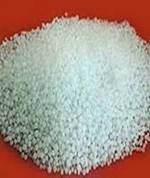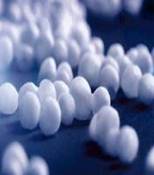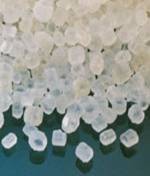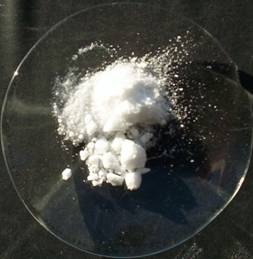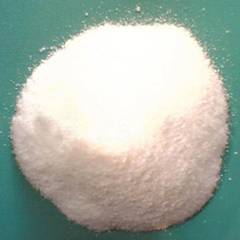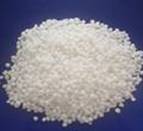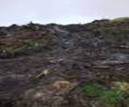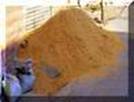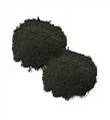
|
|||||||||||||||||||||||||||||
| Home | Seasons & Varieties | Tillage | Nutrient Mgmnt | Irrigation Mgmnt | Weed Mgmnt | Crop Protection | Cost of Cultivation | Photobank | |||||||||||||||||||||||||||||
Nutrient Management :: Fertilizers |
|||||||||||||||||||||||||||||
FERTILIZER Fertilizer is any material of natural or synthetic origin added to the soil to supply one or more plant nutrients. 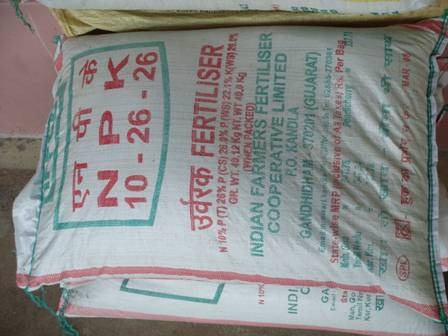 CLASSIFICATION OF FERTILISERS Fertilisers
1. Straight fertilizers: Straight fertilizers are those which supply only one primary plant nutrient, namely nitrogen or phosphorus or potassium. 2. Complex fertilizers: Complex fertilizers contain two or three primary plant nutrients of which two primary nutrients are in chemical combination. These fertilisers are usually produced in granular form. 3. Mixed fertilizers: are physical mixtures of straight fertilisers. They contain two or three primary plant nutrients. Mixed fertilisers are made by thoroughly mixing the ingredients either mechanically or manually.
Fertilizer
Liquid fertilizers:
Fertilizer Nitrogenous fertilizer
A. Nitrogenous fertilizers
The nitrogenous fertilizers can be further classified as given below: 1. Ammoniacal fertilizers
a) Ammonium sulphate [(NH4)2 S04]
b) Ammonium chloride (NH4Cl)
c) Anhydrous ammonia (NH4)
2. Nitrate Fertilizers
a) Sodium nitrate (NaNO3)
b) Calcium nitrate [Ca (NO3)2]
3. Ammoniacal and nitrate fertilizers These fertilizers contain nitrogen in both ammonium and nitrate forms. The nitrates are useful for rapid utilization by crops and the ammonical is gradually available. a) Ammonium nitrate (NH4N03)
b) Calcium ammonium nitrate (CAN)
c) Ammonium sulphate nitrate [(NH4)2S04 NH4NO3]
4. Amide fertilizers
a) Urea [CO (NH2)2]
b) Calcium cyanamide (CaCN2)
B. Phosphatic fertilizers
Super phosphate [Ca (H2PO4)2)
Triple super phosphate:
C. Potassic fertilizers
a) Potassium chloride (KCI)
b) Potassium sulphate (K2S04)
E. Secondary major-nutrient fertilizers a. Magnesium fertilizers These are chemical substances containing the nutrient magnesium in the form of magnesium cations (Mg2+). Magnesium Sulphate (MgSO4) The utilization rate of magnesium fertilizers decreases w,ith incr,easing potassium supplies.
Calcium Chloride (CaCl2 6H2O)
c. Sulphate Fertilizers
D. Micronutrient Fertilizers
These are iron, manganese, zinc, copper, chlorine, boron and molybdenum. a. lron fertilizers
Commonly used iron fertilizers are as follows.
b. Manganese fertilizers The manganese (Mn) fertilizers are as follows:
c. Zinc fertilizers
d. Copper Fertilizers Copper fertilizers have been used to correct copper (Cu), deficiencies. e. Boron Fertilizers
f. Molybdenum Fertilizers
Fertiliser Grade
For example, label on the fertilizer bag with a grade 28-28-0 indicates that 100 kg of fertiliser material contains 28 kg of N, 28 kg of P and no potash.
Some of them are: FERTILIZERRATIO It refers to the ratio of the percentage of N, P2O5 and K2O in the fertilizer mixture e.g., the fertilizer grade 12-6-6 has a fertilizer ratio of 2:1:1. SUPPLIERS OF PLANT NUTRIENTS These are straight fertilizers added to supply the plant nutrient mentioned in the grade. CONDITIONERS These are low grade organic materials like peat soil, paddy husk, groundnut hulls etc., which are added to fertilizer mixtures during their preparation for reducing hygroscopicity and to improve their physical condition. FILLER A filler is a weight make material like sand, soil, coal powder etc, added to the fertilizer ingredients so as to produce a mixture of the desired grade.
These are the materials like dolomite, lime stone etc, added in fertilizer mixtures to counteract the acidity of nitrogenous fertilizers. |
|||||||||||||||||||||||||||||
| Home | Seasons & Varieties | Tillage | Nutrient Management | Irrigation Management | Weed Management | Crop Protection | Cost of Cultivation | Disclaimer
© All Rights Reserved. TNAU-2016. |
|||||||||||||||||||||||||||||


